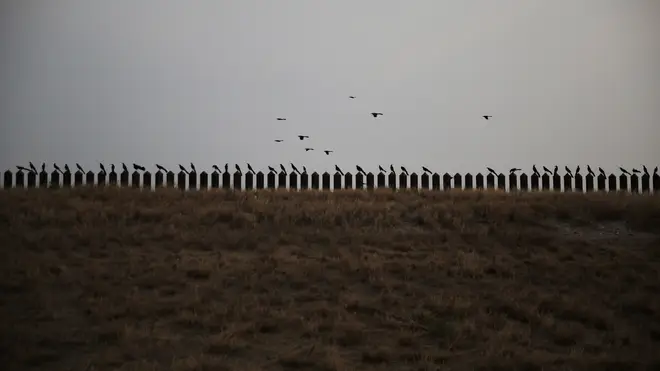
Iain Dale 7pm - 10pm
8 April 2021, 16:34

The influx is a major test for President Joe Biden who has reversed many of Donald Trump’s policies.
The US government picked up nearly 19,000 children travelling alone across the Mexican border in March, authorities said, the largest monthly number ever recorded and a major test for President Joe Biden as he reverses many of his predecessor’s hardline immigration tactics.
A complex mix of factors in the United States and Central America drove the increase.
It has coincided with the Biden administration’s decision to exempt unaccompanied children from pandemic-related powers to immediately expel most people from the country without giving them an opportunity to seek asylum.
Children are instead released to “sponsors” in the US, usually parents or close relatives, while being allowed to pursue their cases in heavily backlogged immigration courts.
The Border Patrol encountered 18,663 unaccompanied children in March, well above previous highs of 11,475 in May 2019 and 10,620 in June 2014.
The agency started publishing the numbers in 2009.
Before then, adults made up the vast majority of those crossing the border.
March’s count was roughly double those encountered by the Border Patrol in February and more than five times the number in March 2020.
The huge increase in children travelling alone, some as young as three, and families has severely strained border holding facilities, which are not allowed to hold people for more than three days but often do.
It has left the government scrambling to find space and hire staff to care for children longer term until they can be placed with sponsors.
For many, a hurricane that hit Central America in November added urgency to endemic poverty and violence that have led people to flee for decades.
Changes in US policy under Mr Biden also have guided their decisions, whether real or rumoured.
Hermelindo Ak, a Guatemalan corn grower who barely makes enough to feed his family, was expelled to Mexico from Texas’ Rio Grande Valley with his 17-year-old son.

Mr Ak decided to send his son alone for a second attempt after learning unaccompanied children can stay in the US.
Mr Ak, 40, said he would return to family in Guatemala after selling his house to pay smugglers.
The plan was for his oldest son to live with relatives in the US.
“I didn’t want to leave him alone,” Mr Ak said last week in the Mexican border city of Reynosa.
“Necessity obligates us.”
Amid the growing numbers, more than 4,000 people at a CBP holding facility have been jammed into a space designed for 250 at a tent complex in Donna, Texas.
They lie inches apart on mats on the floor with foil blankets.

CBP must transfer unaccompanied children within 72 hours to the US Department of Health and Human Services, whose facilities are more suited to longer-term care while arrangements are made to release them.
More than 2,000 children were held longer than that at the Donna facility one day last week, with 39 there at least 15 days.
HHS opened its first temporary holding facility in Carrizo Springs, Texas, on February 22, and has since struck a slew of agreements to occupy large venues near the border, including convention centres in Dallas and San Diego, a stadium in San Antonio, Texas, and Fort Bliss army base in El Paso, Texas.
The department also has been paying for flights for children and sponsors to limit time in government custody.
Overall, the Border Patrol had 168,195 encounters with migrants on the southern border in March, its busiest month since March 2001, when it counted 170,580 arrests.
The numbers are not entirely comparable because more than half of last month’s encounters resulted in expulsions under pandemic-related authority instituted by former president Donald Trump and kept in place by Mr Biden.
People expelled under the public health law are far more likely to try again because they face no legal consequences.